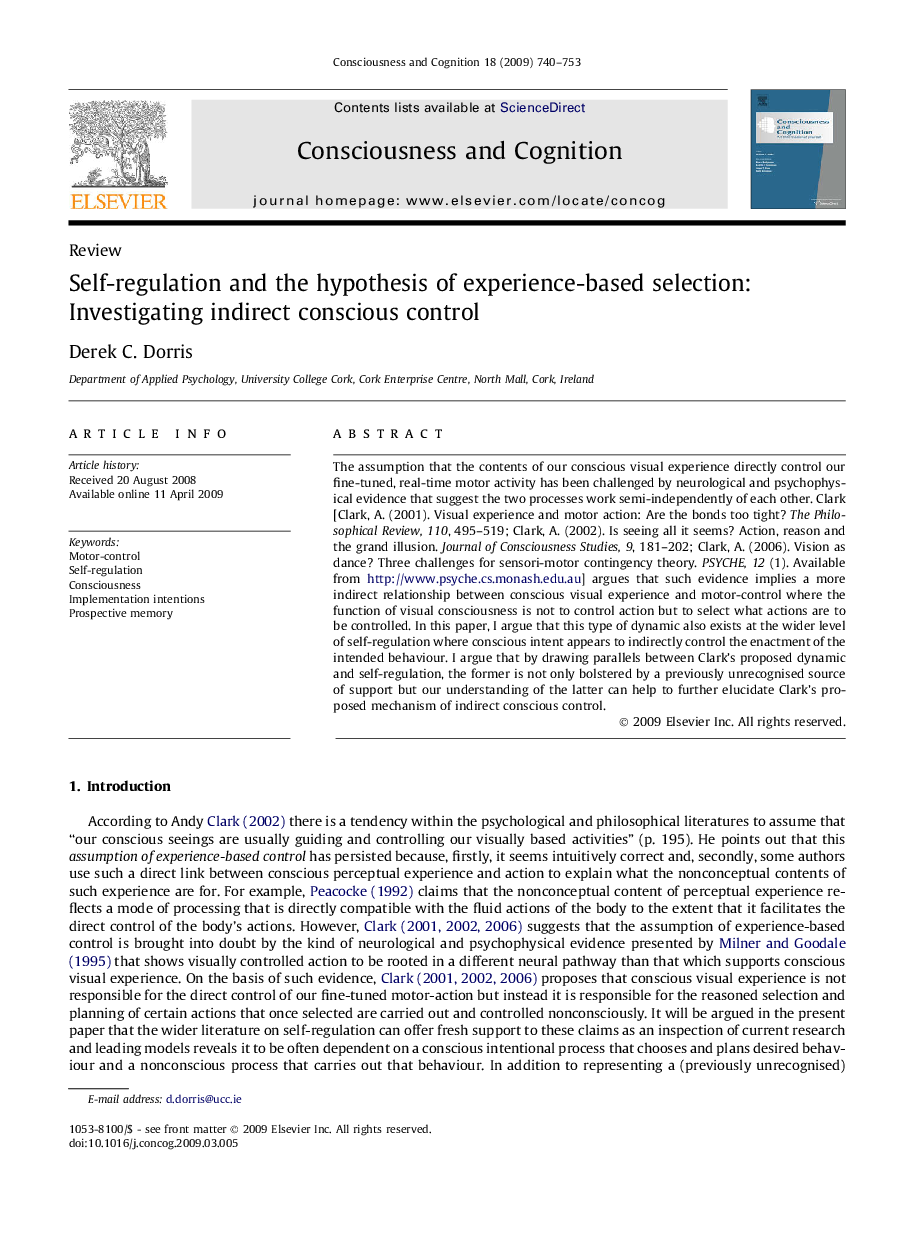| Article ID | Journal | Published Year | Pages | File Type |
|---|---|---|---|---|
| 927903 | Consciousness and Cognition | 2009 | 14 Pages |
The assumption that the contents of our conscious visual experience directly control our fine-tuned, real-time motor activity has been challenged by neurological and psychophysical evidence that suggest the two processes work semi-independently of each other. Clark [Clark, A. (2001). Visual experience and motor action: Are the bonds too tight? The Philosophical Review, 110, 495–519; Clark, A. (2002). Is seeing all it seems? Action, reason and the grand illusion. Journal of Consciousness Studies, 9, 181–202; Clark, A. (2006). Vision as dance? Three challenges for sensori-motor contingency theory. PSYCHE, 12 (1). Available from http://www.psyche.cs.monash.edu.au] argues that such evidence implies a more indirect relationship between conscious visual experience and motor-control where the function of visual consciousness is not to control action but to select what actions are to be controlled. In this paper, I argue that this type of dynamic also exists at the wider level of self-regulation where conscious intent appears to indirectly control the enactment of the intended behaviour. I argue that by drawing parallels between Clark’s proposed dynamic and self-regulation, the former is not only bolstered by a previously unrecognised source of support but our understanding of the latter can help to further elucidate Clark’s proposed mechanism of indirect conscious control.
